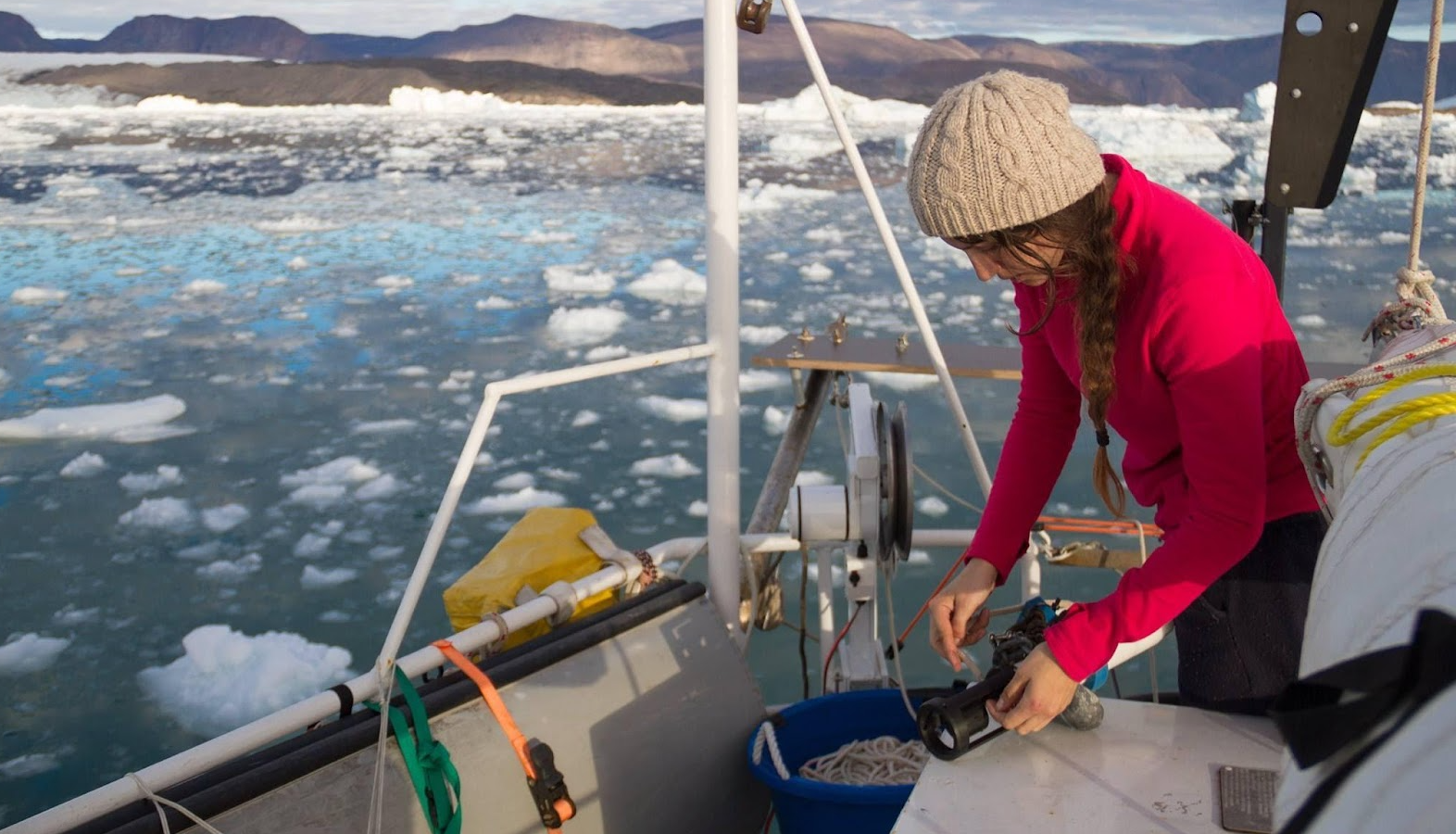In 2012, at a Maryland yacht club on Chesapeake Bay, two modern mariners and environmental activists crossed paths. Matt Rutherford was speaking about his recent world-record-making, solo circumnavigation of the Americas. Oceanographer, Nicole Trenholm, was in the audience.
During his 309-day, 27,000-mile expedition, Rutherford often pulled two fishing lines behind his 27-foot sailboat to supplement his food supply. He was struck by how often he caught plastic trash as opposed to the fish he was anticipating.
Additionally, noticeably diminishing sea ice through the Northwest Passage—the northern route that connects the Atlantic and Pacific oceans through the Arctic—assuaged some navigational challenges in this notoriously dangerous area.
Fueled by his passion for sailing and a desire to affect change in response to what he’d experienced throughout the past year, Rutherford founded Ocean Research Project (ORP) upon his return.
ORP conducts “scientific exploration under sail” in pursuit of their mission “to monitor humanity’s impact on the Ocean through dedicated interdisciplinary field expeditions.”
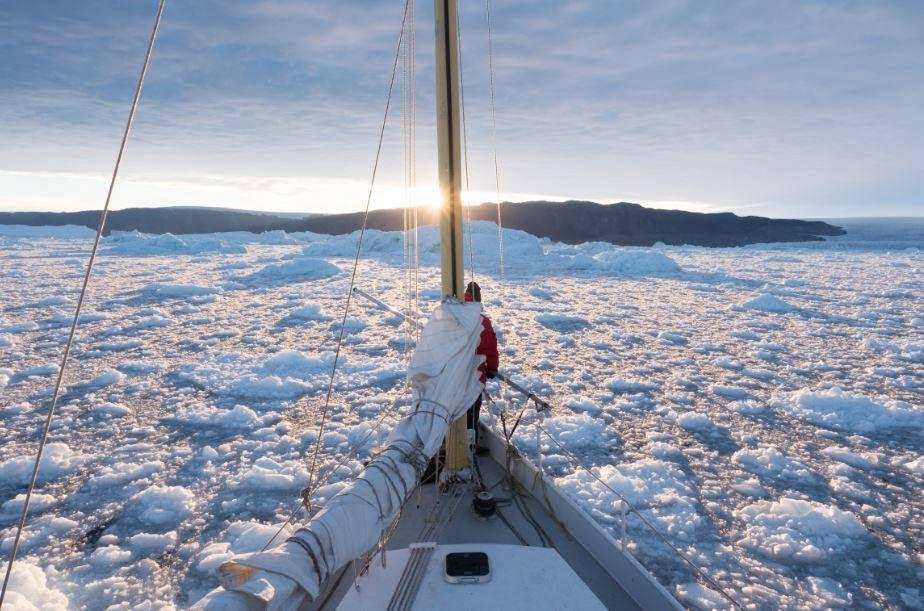
ORP sailing in the Arctic. Photo by Alexander Stillson
Though Rutherford had passion and sailing prowess, he lacked scientific training.
As Trenholm listened to Rutherford speak that day, she couldn’t deny the truth that she’d found someone who shared her own vision.
At the time, Trenholm was working on research boats for the National Oceanic Atmospheric Administration (NOAA), sailing on nights and weekends with friends, and had just obtained her captain’s license.
She too had been dreaming of marrying her oceanic research efforts with her penchant for sailing. Hearing Rutherford speak that day, she knew that they could combine their talents and carry the vision out together.
A few months later she approached Rutherford with the irresistible offer to head the scientific arm of the organization, spearhead educational efforts that could inspire future generations of ocean stewards and add another highly skilled mariner to the crew.
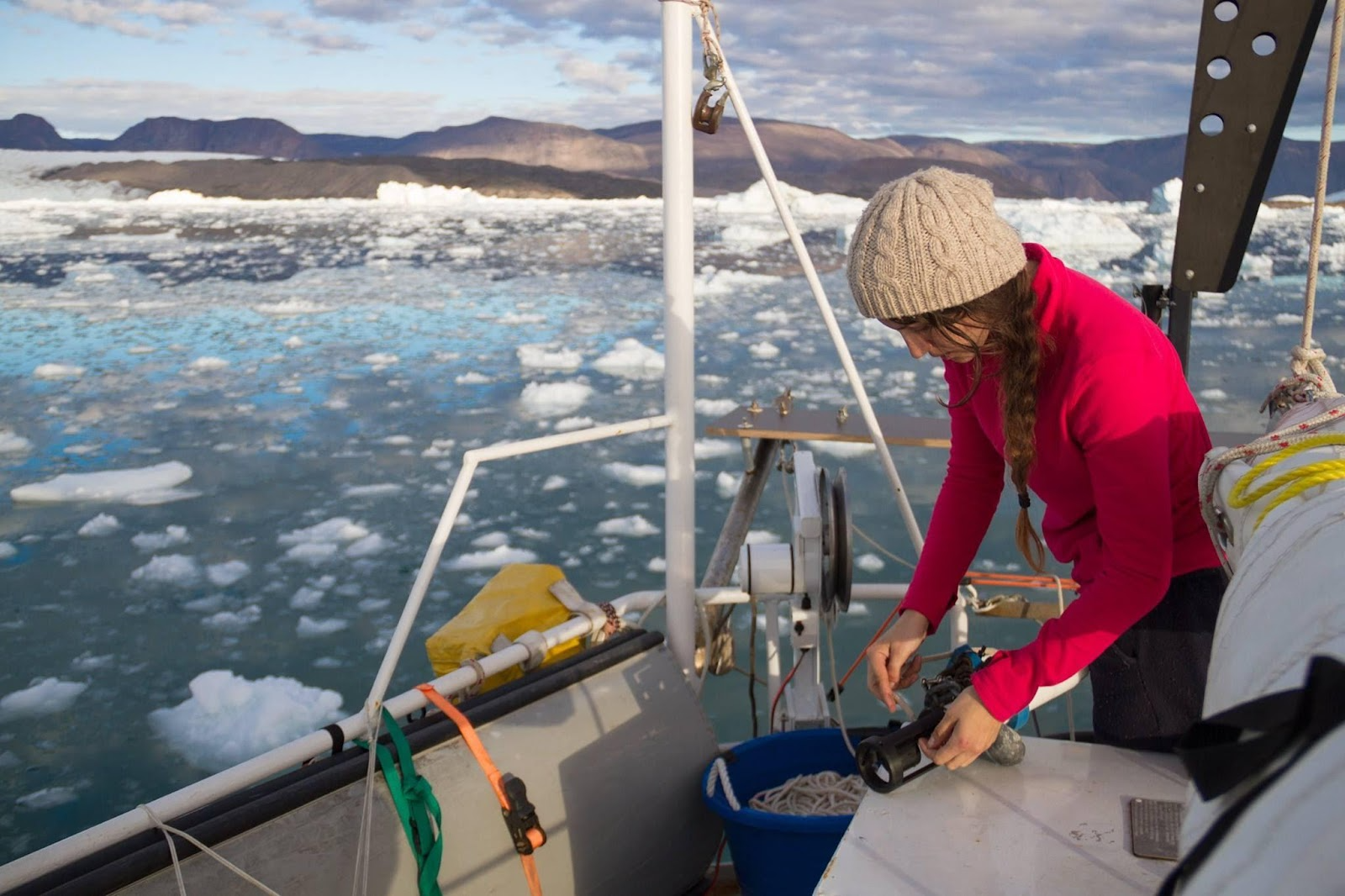
Nicole Trenholm working in the field. Photo by Alexander Stillson
“We both were on the same journey of going towards sail-based ocean research, and it just so happened to serendipitously come together,” Trenholm said.
The pair set to work readying a newly acquired steel schooner, which required an extensive refit for their inaugural journey. In 2013, they set sail from their home base in Annapolis, Maryland, for a 70-day expedition in the north Atlantic. They had their sights set on plastic pollution in the ocean as their first area of study.
The research
A decade ago, the issue of plastic pollution in the ocean, and getting a more defined idea of what was actually out there, was one that still had many unknowns associated with it. Trenholm and Rutherford set out to help fill in some of these knowledge gaps.
The first year, ORP focused their efforts on collecting samples of marine debris and mapping the eastern side of the North Atlantic Garbage Patch. The following year, they transitioned these research efforts to the Pacific.
Since that time, ORP has expanded their research efforts, and shifted their focus toward climate change.
In 2015 and 2016, the fledgling nonprofit secured a partnership with NASA’s Ocean Melting Greenland (OMG) Program to conduct groundbreaking research focused on the melting of Greenland’s ocean-terminating glaciers.
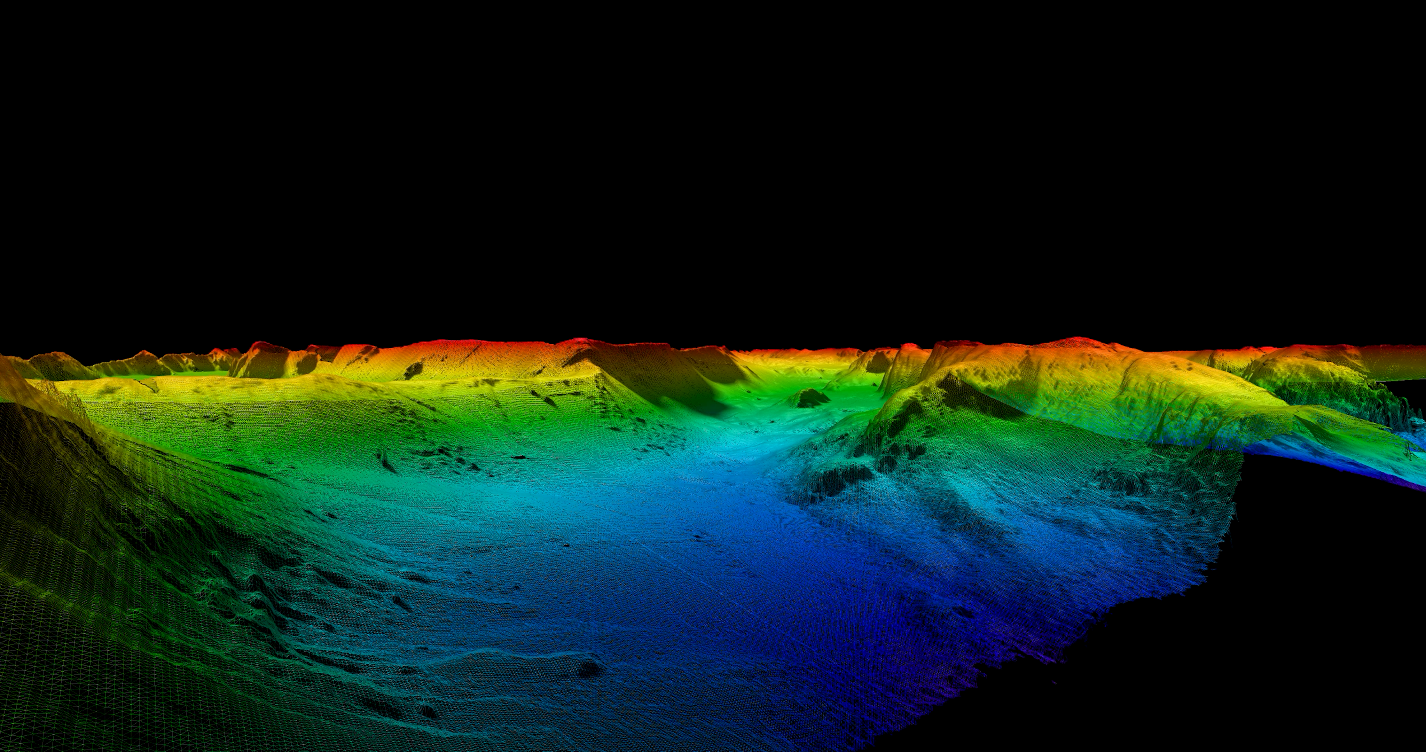
ORP’s GO-MARIE 2022 seafloor survey in glacial fjords. Photo by Tomer Ketter
ORP states that, “The primary objective was to learn more about the warm, salty water column coming up from the Atlantic that was thought to be melting [these] glaciers from below.”
Throughout the two, five-month expeditions that were conducted during that time, ORP’s crew worked continuously, collecting data in the remote and rugged Arctic—all while weathering intense storms, with abundant ocean ice and uncharted rocks testing their expert navigation skills.
As a result of their dogged efforts, the team was able to map the depth and pathway of the warmer Atlantic-originating currents and map several areas of the seafloor that had never been mapped before—an initiative that is currently a primary focus for the organization.
The dataset from these expeditions significantly contributed to a paper ORP coauthored with NASA’s OMG Program that examines glacial melt and sea level rise—a global issue that has notably dramatic implications for coastal populations.
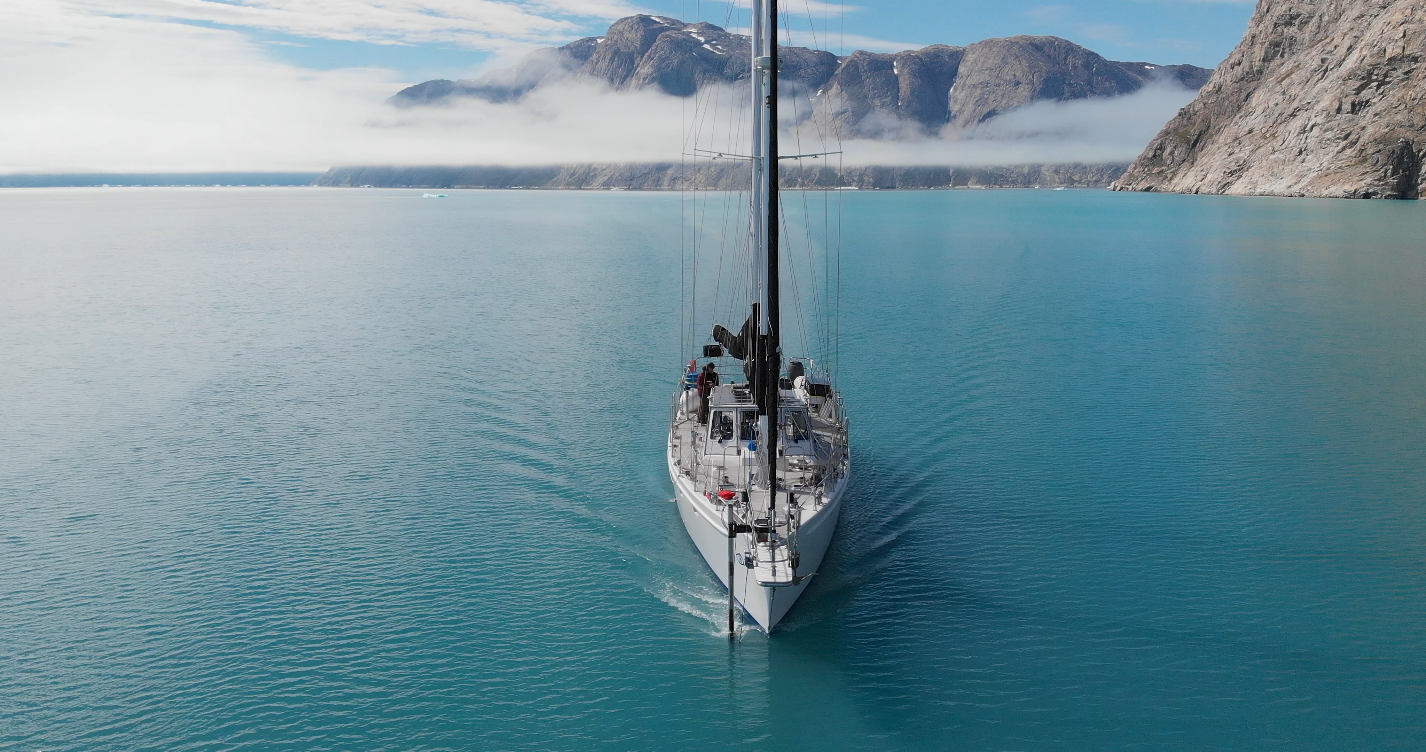
Science under sail. Photo by Tomer Ketter
ORP’s current mission of ocean floor mapping is focused in the area around the Greenland Ice Sheet, which is an area of particular concern, as the Arctic is warming at nearly four times the rate of the rest of the world.
With nearly 80% of the ocean floor yet unmapped, this critical work will enable more accurate sea level rise projections and climate modeling to be possible.
As ORP puts it, “How can we tackle global warming—a multi-Earth system phenomena—if we do not know what the foundation of Earth’s planet is like? It’s like trying to manage a balanced heating and cooling system in your house without knowing how much space you are working with or where exactly the floor is.”
“We believe we're really contributing to climate change science and supporting sustainable lifestyles of people in the marine environment,” Trenholm said.
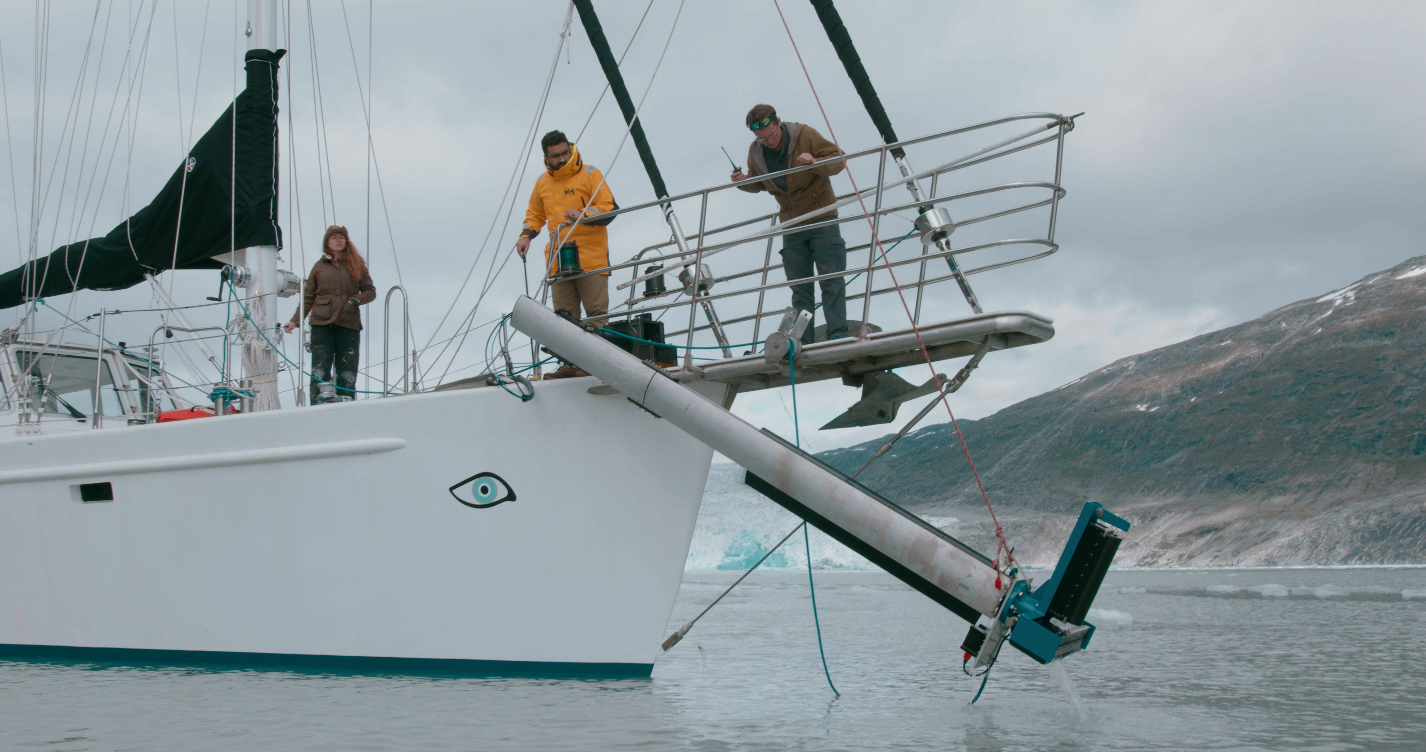
Lowering the sonar arm to take depth measurements. Photo by Phineas Alexander
The approach
One of the main drivers behind ORP’s model of using a sailing vessel for their scientific research is to drastically reduce fossil fuel consumption.
ORP does rely upon diesel for the slow and careful maneuvering that is required while working amidst heavy sea ice, and for powering the refrigerators and freezers required to preserve precious research samples. Yet, the amount of carbon emissions that their vessel produces throughout the course of an entire field season is what certain ice-breaking research vessels in the Arctic emit in one day.
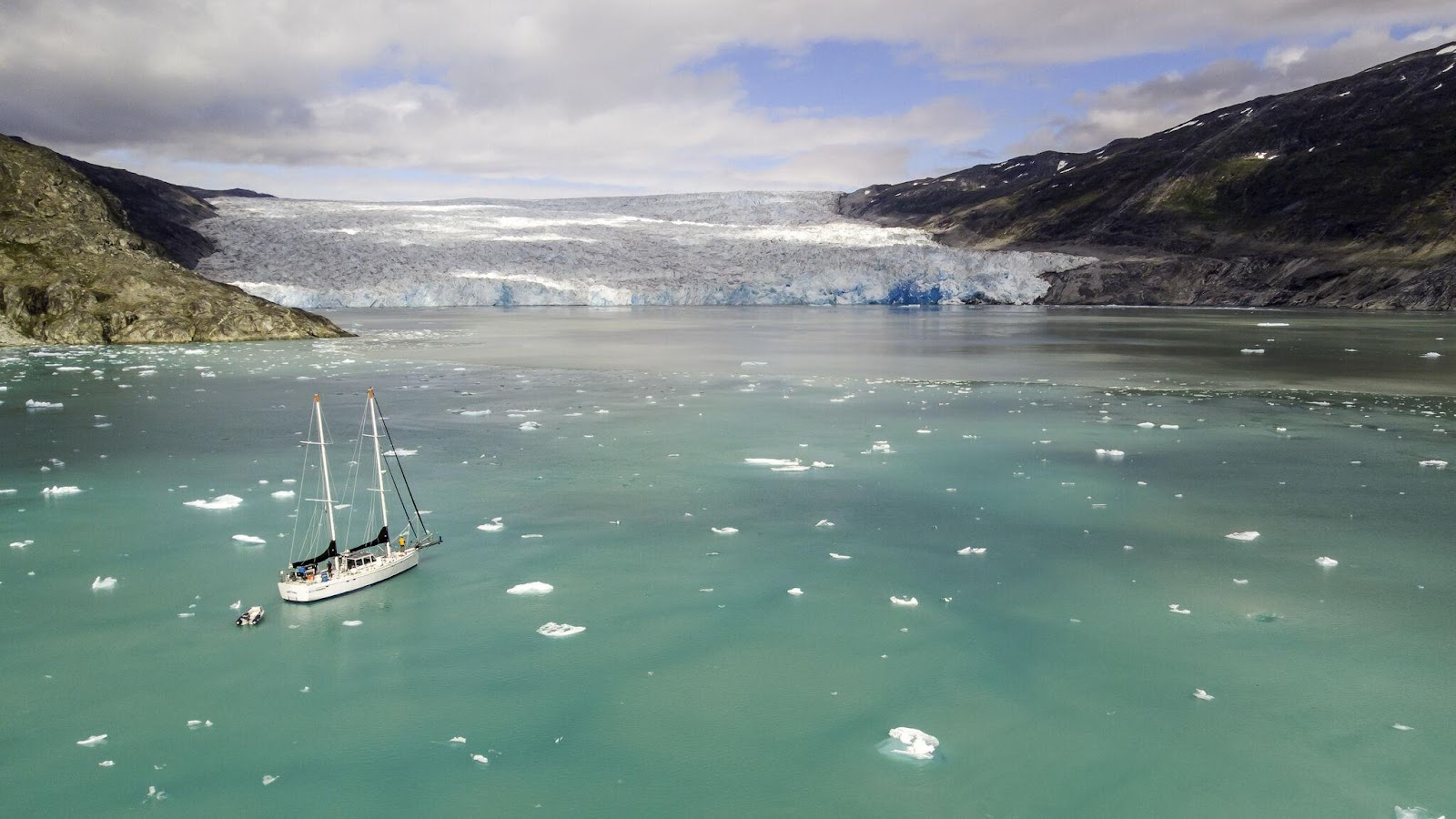
ORP’s sailboat near an ocean-terminating glacier. Photo by Tomer Ketter
Though there is room, and perhaps arguably a need, for all types of research vessels, ORP’s founders believe that their method is duplicable and scalable.
Indeed, it was the data collected during a nineteenth century, global circumnavigation with the sailing ship, the Challenger, that laid the groundwork for oceanography.
Since ORP’s founding, the duo has worked with teams of talented and purpose-driven seasonal crew and volunteers. Additionally, they’ve been championed by a dedicated board. However, the heavy lifting is primarily carried out by the founders.
“It's a high passion project,” Trenholm said, noting that, “We need support to pay our inspiring, talented crew of science pirates.”
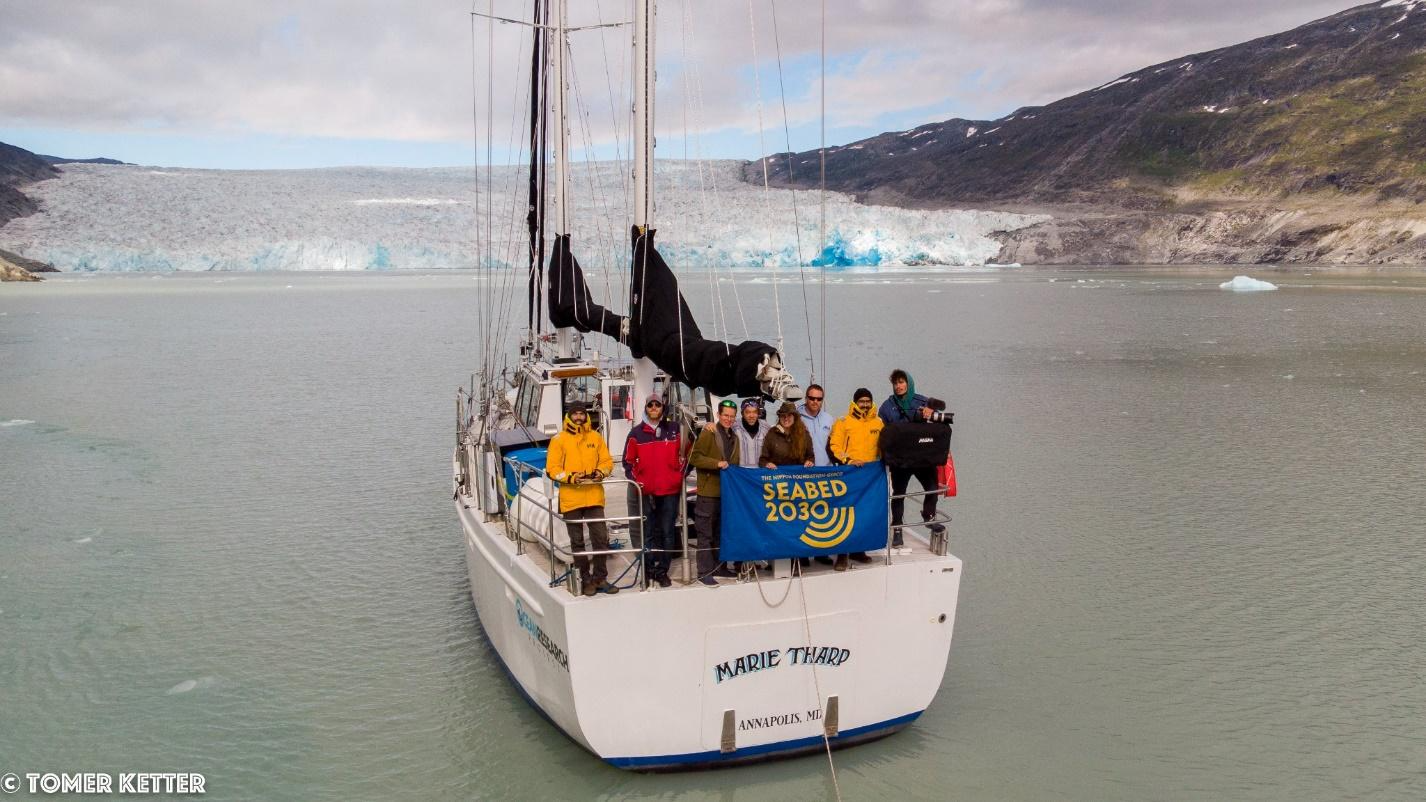
ORP crew aboard the Marie Tharp. Photo by Tomer Ketter
The pair has relied upon their individual, and overlapping, skillsets to advance the organization toward its goals over the years.
With Rutherford’s charismatic, off-the-cuff storytelling, and the reputation he’s garnered as a highly accomplished self-taught sailor, he’s been able to connect with members of the maritime community through his podcast and organic networking. This has led to the sprinkles of support that have kept ORP going.
Playing on her strength, Trenholm has harnessed the power of her scientific knowledge and her connections within the scientific community to garner similar results—perhaps most notably, the partnership with NASA’s OMG Program.
A testament to their passion and drive to continue their work is found in the creative ways the organization fundraises in years that are lean on traditional funding. Sailors looking to glean Arctic sailing experience can rent a berth on ORP’s ship for a given journey leg. This mutually beneficial relationship provides a cash infusion for ORP and an opportunity for sailors to learn the valuable skills necessary to operate in the unique and dynamic environment of the Arctic.
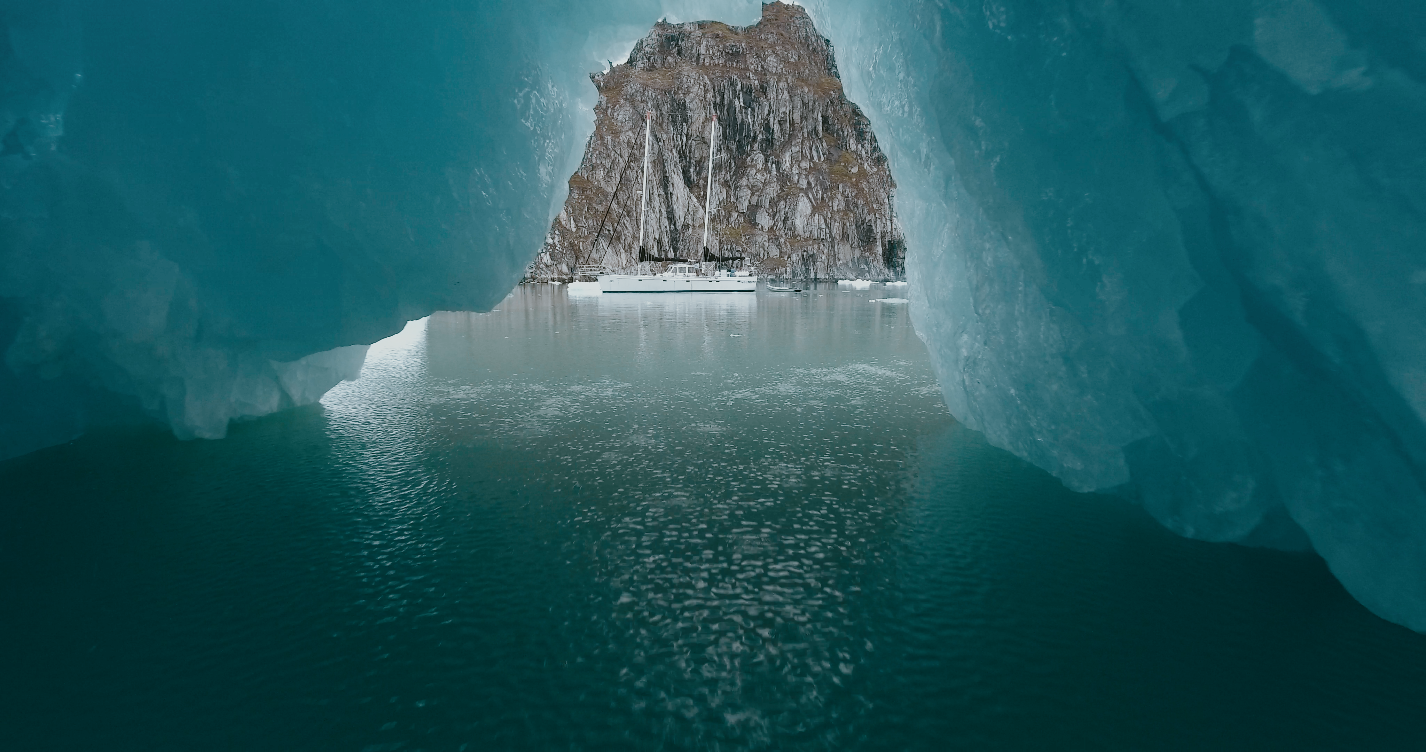
Peeking through an iceberg. Photo courtesy of ORP
The future
Just as the physical environment the crew is working in is dualistic in nature—which is encapsulated in the majesty and the threats from the ice surrounding them—so are the experiences had there.
While one day it is commonplace to witness a feeding frenzy at a marine-terminating glacier—rich in whales, fish schools, and bird life, offering a testament to the availability of the food sources these animals need—other days a terrifying looking glass, exposing the hardships these Arctic animals face is held up.
Like the August day the crew weathered a particularly harrowing storm near the 78th parallel. After the storm had passed, they set off once again. It was then that they came upon a mother polar bear with her two cubs swimming—ten miles from land, with no sea ice to be found, even at that far northern latitude. The trio had survived the storm, but their struggle was far from over.
This stark moment highlights a reason why Trenholm does what she does. “My organization is focused on the critical observations needed to bring insight to the global community about how intense the [climate] impact is and how it's already influencing the marine ecosystem,” she said.
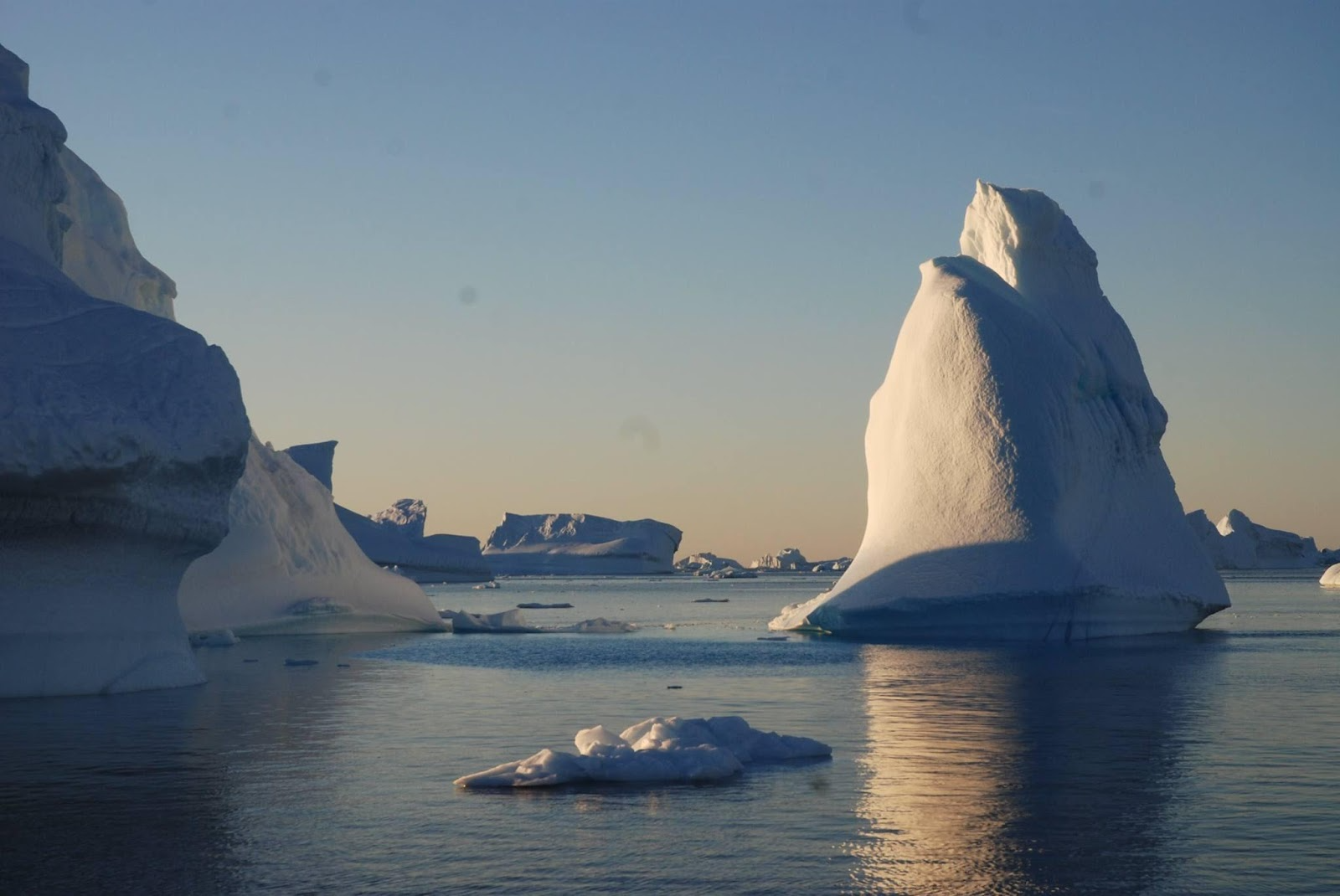
Arctic icebergs. Photo courtesy of ORP
While ORP is dedicated to their current initiative of seafloor mapping, there are changes afoot that excite the team. This summer they welcome the addition of a hull-embedded, multi-beam sonar that can take continuous measurements, rather than repeatedly lowering a device into the water.
Additionally, more women sailors are joining the crew this year—bringing balance to the traditionally male dominated realm of polar exploration. There are also hopes of more female scientists joining the team.
There are also plans being laid to expand the fleet, but not in the traditional sense.
“Next summer we intend to demonstrate expanding our data collection. . . with the use of a surfer,” Trenholm said. A female science and engineering team will lead the initiative on the autonomous vehicle, which will facilitate further exploration within the glacial fjords.
To track this year’s expedition, support, or learn more visit oceanresearchproject.org.
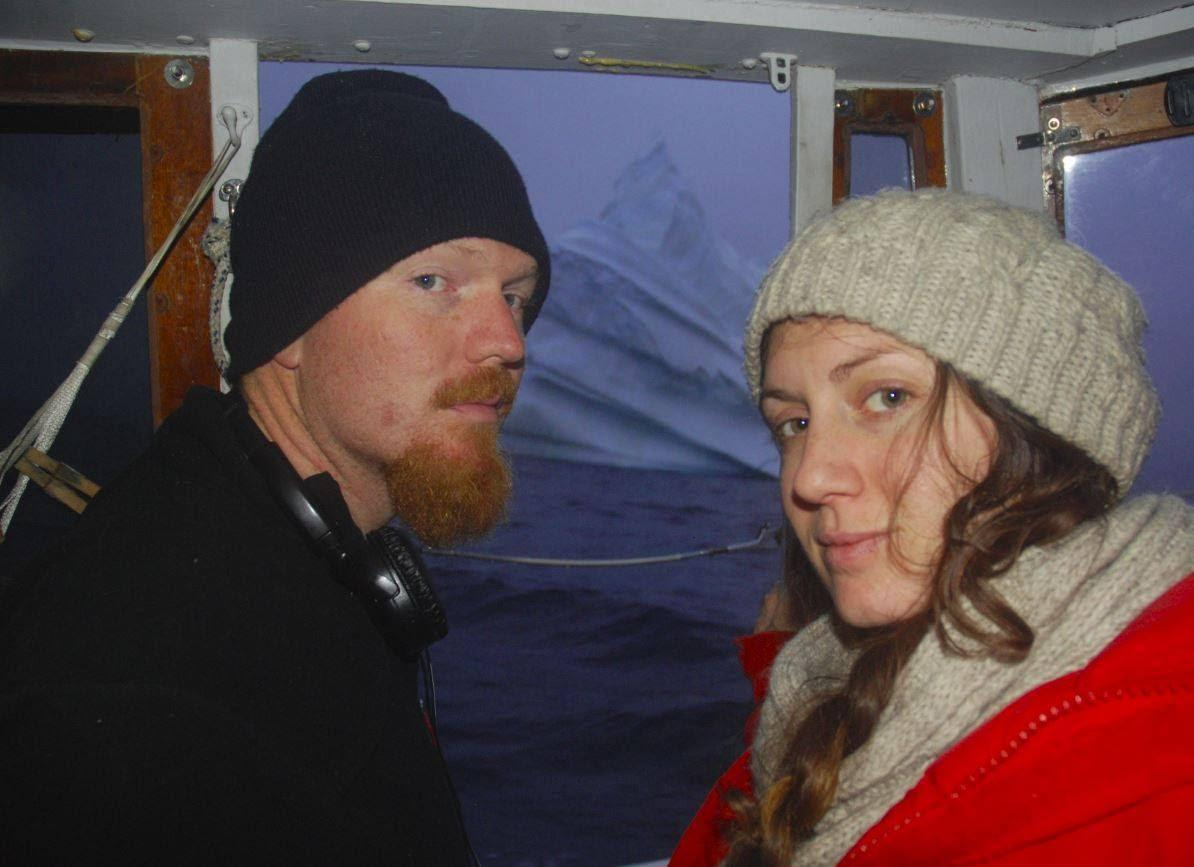
ORP founders, Matt Rutherford and Nicole Trenholm. Photo by Alexander Stillson
